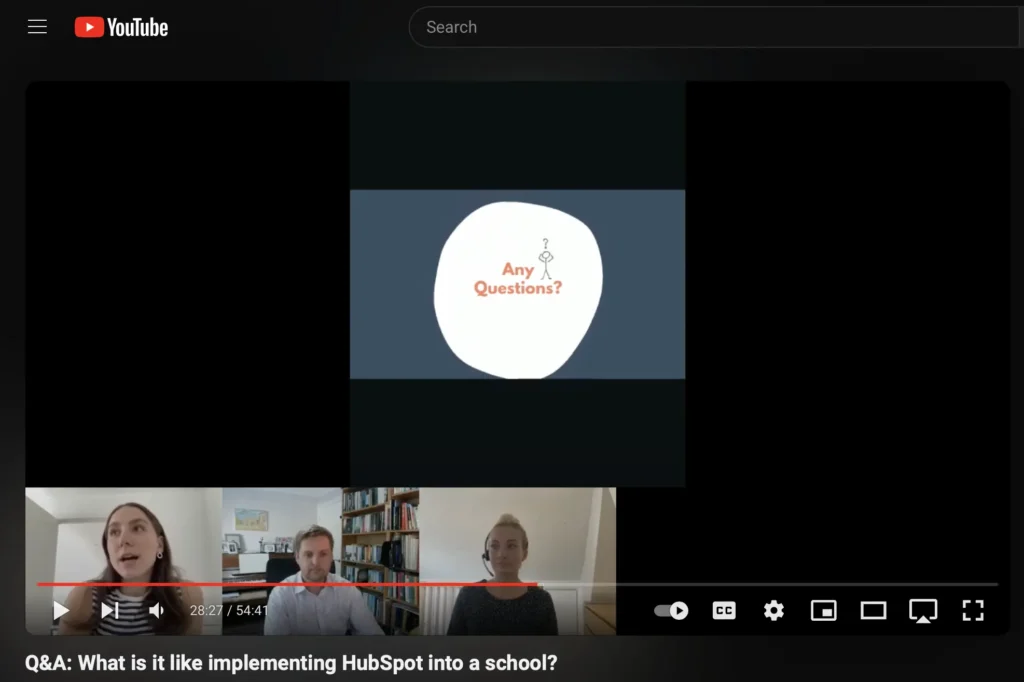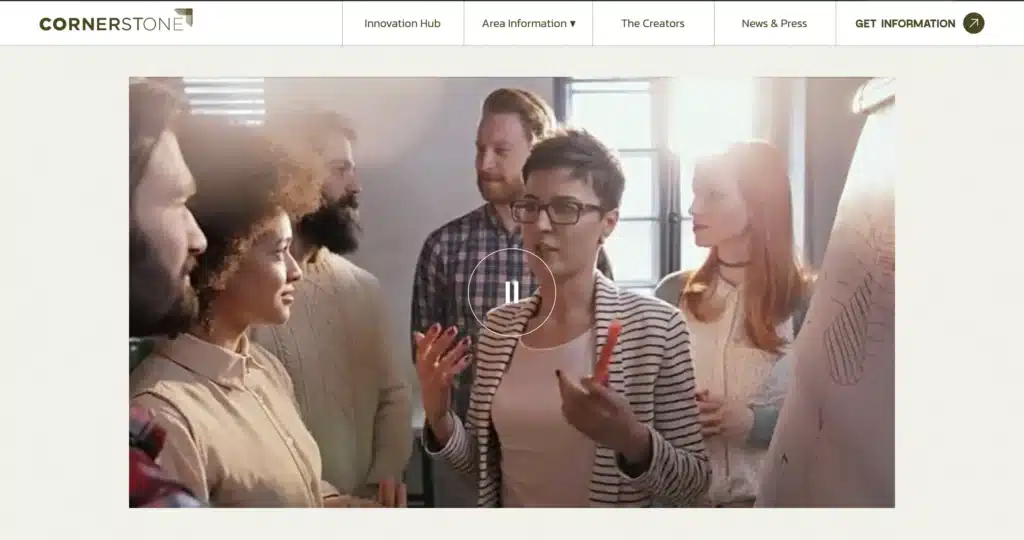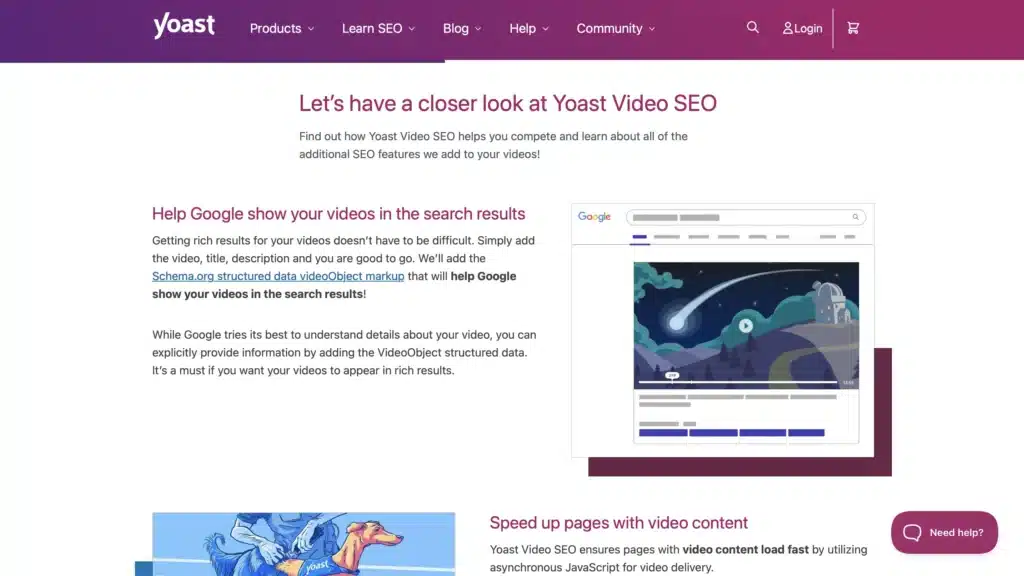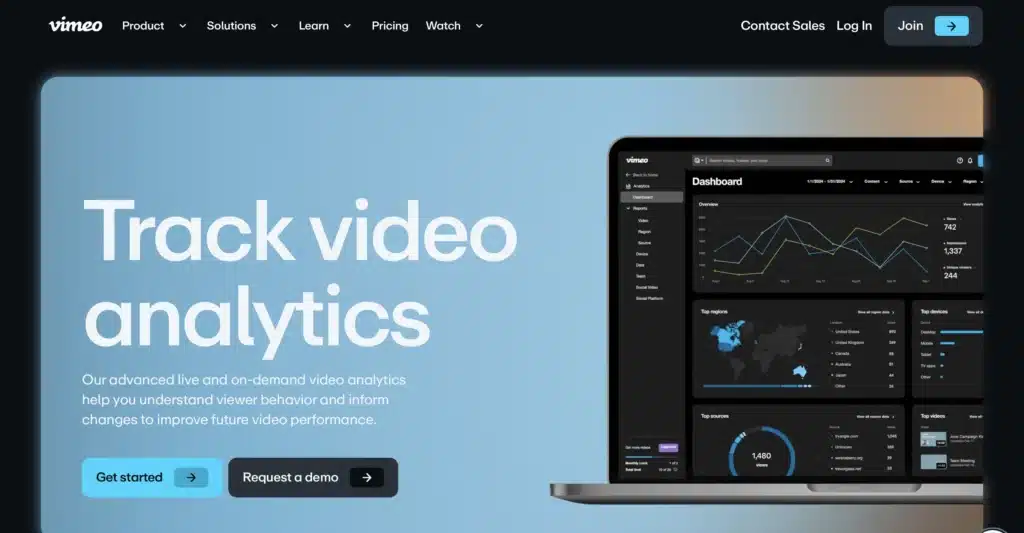At DesigningIT, we understand the ever-evolving landscape of digital marketing and the crucial role that video content plays in connecting with audiences. As experts in crafting powerful marketing strategies, we’ve seen firsthand how well-executed video marketing strategies can transform a brand’s online presence. Video is more than just a trend; it’s a dynamic tool that can captivate, engage, and convert viewers like no other medium.
In this guide, we’re excited to share our insights on how to build a video marketing strategy that not only elevates your brand but also resonates with your target audience and drives meaningful results. We’ll delve into the essential elements of video marketing, from the foundational best practices to the strategic planning necessary to make your content stand out in a crowded digital space.
Let’s get started on creating a video marketing strategy that truly sets your brand apart!
What is Video Marketing?
Before we dive into the strategies, let’s first break down what video marketing really is. Simply put, video marketing is the practice of using videos to promote, explain, or support your brand, products, or services. This can range from quick, engaging clips on social media to in-depth, professional promotional videos.
So why is video marketing so powerful? Here are a few key reasons:
- Builds Trust: Videos allow your audience to see the real personality behind your brand, giving them a sense of who you are and what you stand for. When people feel like they know your brand, they’re more likely to trust you, which is crucial for building lasting relationships with customers.
- Simplifies Complex Ideas: If your product or service has a lot of moving parts, a well-crafted video can break it down in a way that’s easy to understand. This makes it easier for potential customers to get the information they need to make informed decisions.
- Creates Emotional Connections: Through storytelling, visuals, and music, videos can evoke emotions that resonate with your audience. This emotional connection is what makes people care about your brand and what you have to say.
Video marketing isn’t just about creating videos; it’s about crafting the right kind of videos that align with your brand’s goals and speak directly to your audience. Understanding this foundation will set you on the path to making impactful videos that truly resonate.

Benefits of Video Marketing for Business
Video marketing has become an essential tool for businesses looking to expand their reach, engage with their audience, and drive conversions. Its versatility and effectiveness make it a cornerstone of any comprehensive marketing strategy. Here’s a closer look at the key benefits of video marketing:
1. Enhanced engagement: Videos are highly engaging and can capture attention more effectively than text or images, making them ideal for keeping viewers interested and encouraging interaction.
2. Improved SEO: Search engines prioritize video content, helping your website rank higher in search results. Optimized videos on platforms like YouTube can drive significant traffic to your site.
3. Higher conversion rates: Including videos on landing pages can boost conversion rates by up to 80%. Videos provide a clearer understanding of your products or services, increasing the likelihood of customer action.
4. Better brand awareness: Videos are easily shareable, expanding your brand’s reach and visibility. They allow you to showcase your brand’s personality, helping to build a strong and memorable identity.
5. Increased social media reach: Social media platforms favor video content, leading to greater reach and engagement. Videos are more likely to appear in users’ feeds, making them a powerful tool for social media marketing.
6. Effective customer education: Videos are excellent for educating customers, simplifying complex information through tutorials, how-to guides, and explainer videos, and positioning your brand as an industry authority.
7. Building trust and credibility: Video content, especially testimonials and behind-the-scenes footage, helps build trust by making your brand more relatable and authentic, providing social proof to potential customers.
8. Emotional connection: Videos can create a strong emotional connection with your audience through visuals, sound, and storytelling, making your brand more memorable and impactful.
Video Marketing: Importance in Numbers
Understanding the impact of video marketing through statistics can guide brands in shaping effective strategies. Here are some key figures that highlight the importance of video marketing:
- 89% of consumers want to see more videos from brands in 2024. (Wyzowl)
This indicates a strong demand for video content, suggesting that brands should prioritize video in their marketing efforts. - 91% of people have watched an explainer video to learn more about a product or service. (Wyzowl)
Explainer videos are highly effective in educating consumers, making them a critical component of video marketing strategies. - 58% of consumers prefer to watch video content on a smartphone, with laptops being the second choice at 19%. (Lemonlight)
This statistic underscores the importance of optimizing videos for mobile viewing, as the majority of consumers engage with video content on their smartphones. - When asked how they’d like to learn about a product or service, 44% of people prefer watching a short video. This preference far exceeds other formats like ebooks (16%), infographics (15%), text-based articles (13%), sales calls (6%), and webinars (5%). (Wyzowl) Short videos are clearly the preferred method for learning about products, making them essential for effective communication with potential customers.

Source: MotionGility
Main Types of Marketing Videos to Boost Your Brand
Video marketing offers a wide array of formats, each with its own strengths, allowing brands to connect with their audiences in meaningful ways. Let’s explore some of the key types of marketing videos and how they can help elevate your brand.
1. Explainer Videos
Explainer videos are designed to simplify complex ideas or products, making them accessible to your audience. These videos are particularly useful for introducing new concepts or services, as they distill information into a concise and engaging format. For brands looking to demystify their offerings and communicate their value clearly, explainer videos are an excellent choice.
2. Product Demonstrations
Product demo videos serve as a virtual test drive for your products, showcasing how they work and highlighting their benefits. These videos are crucial for products that require a deeper understanding of functionality, such as tech gadgets or specialized tools. By demonstrating real-world applications, product demos can build confidence and drive purchase decisions.
3. Customer Testimonials
Nothing builds credibility quite like the voice of a satisfied customer. Testimonial videos feature real customers sharing their positive experiences with your brand, providing authentic social proof. This format is particularly powerful for service-based businesses, as it allows potential clients to see firsthand the value others have gained, making them more likely to trust and choose your brand.
4. Educational How-To Videos
How-to videos are instructional guides that show viewers how to use your product or solve a problem related to your service. These videos not only provide value by helping customers get the most out of their purchase but also position your brand as a helpful and knowledgeable resource. For companies offering products that require assembly or have a learning curve, how-to videos can enhance user experience and reduce customer support inquiries.
5. Live Streaming
Live streaming offers a direct line of communication with your audience, allowing real-time interaction. Whether you’re hosting a product launch, a Q&A session, or a behind-the-scenes look at your business, live streams create a sense of immediacy and exclusivity. This format is especially effective for building community and driving engagement, as viewers feel they are part of a unique, real-time experience.

6. Event Highlights
Event videos capture the essence of live events, whether it’s a conference, workshop, or product unveiling. These videos serve as both a recap for attendees and a promotional tool for future events. By showcasing the energy and key moments from your event, you can extend its impact and encourage participation in future gatherings.

7. Thought Leadership Interviews
Interview videos featuring industry experts or key figures within your company can position your brand as a leader in your field. These videos provide valuable insights and perspectives, making them ideal for B2B marketing or educational content. By sharing expert knowledge, you can build credibility and trust with your audience, establishing your brand as an authority.
8. User-Generated Content (UGC)
Featuring videos created by your audience—whether they are reviews, unboxings, or creative uses of your product—UGC fosters community and authenticity. This type of content is particularly effective in industries like fashion, travel, and consumer goods, where peer recommendations can significantly influence purchasing decisions.
9. Animated Explainers
Animated videos use engaging visuals to explain complex ideas or abstract concepts. This format is particularly useful for educational content or services that are difficult to visualize. By breaking down information into visually appealing segments, animated videos can simplify your message and make it more digestible for a broader audience.
Essential Equipment You Need for Video Marketing
To create impactful videos that effectively promote your brand, having the right equipment is crucial. Here’s what you need:
- Camera: Investing in a good DSLR or mirrorless camera will give you high-quality visuals and greater control over your footage. While modern smartphones can also produce excellent video, a dedicated camera offers more professional results, especially for more complex shoots.
- Microphone: Clear audio is essential for professional videos. An external microphone, such as a lavalier mic for interviews or a shotgun mic for general use, will ensure your sound quality matches the visual clarity.
- Lighting: Proper lighting can dramatically improve your video’s appearance. Softbox lights or ring lights are great for creating even, flattering light that eliminates shadows and highlights your subject effectively.
- Tripod/Stabilizer: A tripod is necessary for keeping your shots steady and professional. For dynamic shooting, a stabilizer or gimbal will help you capture smooth, fluid motion, making your videos look more polished.
- Video Editing Software: After shooting, the real magic happens in post-production. Software like Adobe Premiere Pro, Final Cut Pro, or even iMovie allows you to edit, color-correct, and add effects, turning raw footage into a compelling final product.
With this equipment, you’ll be well-equipped to produce high-quality videos that captivate your audience and significantly enhance your brand’s online presence.

Top Video Marketing Strategies
Implementing effective video marketing strategies is essential for boosting your brand’s visibility and engagement. Below are three key strategies that can help you maximize the impact of your video content.
Understanding Your Audience
Your target audience represents the specific demographic and customer persona you want to connect with through your video content. Ideally, you’ve already identified this audience as part of your overall branding strategy. If not, it’s crucial to do so before launching into video marketing. Use tools like market research, focus groups, and surveys to dive deep into who your potential customers are and what they care about.
When creating video content, focus on your audience’s unique needs, desires, and challenges. Tailor your videos to speak directly to them. Keep in mind that your audience may differ across various social media platforms. The type of content that works on Instagram might not be as effective on LinkedIn or TikTok.
To find out what resonates best, experiment with platform-specific video styles and engage with your followers to gather feedback. This process will help you fine-tune your content strategy, ensuring that your videos hit the mark with each segment of your audience.
Creating Engaging Content
The cornerstone of any successful video marketing campaign is creating content that resonates with your audience. To achieve this, start by understanding who your target audience is and what they care about. Tailor your content to address their needs, challenges, and interests.
Use storytelling techniques to create a narrative that captures attention and evokes emotion. Keep your videos concise and to the point, as attention spans are short. High-quality production, including clear audio and crisp visuals, is also crucial in keeping viewers engaged and enhancing your brand’s credibility.
Tips for Creating Engaging Content for Video Marketing
| Tip | Description |
| Know Your Audience | Understand your target demographic and tailor your content to their interests, needs, and preferences. |
| Start with a Strong Hook | Capture attention in the first few seconds with a compelling question, statement, or visual. |
| Tell a Story | Use storytelling to create an emotional connection, making your content memorable and relatable. |
| Keep it Concise | Respect your audience’s time by keeping videos short and to the point, especially on social media. |
| Use High-Quality Visuals | Invest in good lighting, clear visuals, and professional editing to enhance the overall production value. |
| Incorporate a Call to Action | Encourage viewers to take the next step, whether it’s visiting your website, subscribing, or sharing the video. |
| Add Subtitles or Captions | Ensure your content is accessible to all, including those watching without sound or with hearing impairments. |
| Leverage Music and Sound | Use music and sound effects to set the tone and enhance the emotional impact of your video. |
| Be Authentic | Authenticity builds trust. Show the real people behind your brand and be genuine in your messaging. |
| Experiment with Formats | Try different video formats like tutorials, behind-the-scenes, or live videos to keep your content fresh and engaging. |
| Engage with Viewers | Respond to comments and encourage interaction to build a community around your content. |
| Optimize for Each Platform | Tailor your video content to the specific platform you’re using, considering format, length, and audience. |
Setting a Budget
Creating videos with high production value can often come with a hefty price tag, but the surge in popularity of vertical video formats—thanks to platforms like TikTok—has leveled the playing field. This low-effort format allows brands, regardless of their budget, to dive into video marketing and start building a presence.
If you’re planning to produce a polished brand story video for your YouTube channel or your About page, it’s important to consider the various costs involved. These may include expenses for talent, a production crew, video editing, and post-production. For animated videos, you’ll need to factor in the cost of hiring skilled motion designers and illustrators. Allocating a larger budget for a video that will be highly visible and foundational to your brand’s image might be a smart investment.
On social media, an effective video strategy often revolves around creating a steady stream of short-form content to keep your audience engaged. This approach doesn’t have to break the bank—by setting a budget that balances quality with frequency, you can maintain a strong video presence without overspending.
Using Different Types of Video Marketing
Diversifying your video content is key to reaching different segments of your audience and achieving various marketing goals. Consider incorporating a mix of explainer videos, product demos, customer testimonials, and how-to guides into your strategy.
Explainer videos can simplify complex concepts, making them ideal for introducing new products or services. Product demos allow potential customers to see your offerings in action, helping to build trust and drive sales. Customer testimonials provide powerful social proof, while how-to videos offer valuable information that positions your brand as a helpful resource.
By using a variety of video types, you can cater to different audience preferences and needs.
How to Choose the Right Video Type for Your Video Marketing Efforts
- Set Your Objective: Determine your goal—brand awareness, product education, or engagement—to guide your video type.
- Know Your Audience: Tailor content to what your audience engages with most, like short TikTok clips for younger viewers or detailed explainers for B2B clients.
- Craft Your Message: Match the video type to your message—use explainer videos for complex ideas and testimonials for customer stories.
- Choose the Platform: Pick the right platform for your video—Instagram and TikTok for short videos, YouTube for longer content.
- Evaluate Budget: Align your video type with your budget—high-production videos need more investment, while simple how-tos can be cost-effective.
- Match the Funnel Stage: Select video types based on where your audience is in the sales funnel—awareness videos for new viewers, how-tos for those considering a purchase.
- Test and Optimize: Experiment with various video types, analyze results, and refine based on performance.
- Reflect Brand Personality: Ensure the video type matches your brand’s tone—animated videos for a lively brand, polished content for a professional image.
- Consider Longevity: Decide if your video should be evergreen or time-sensitive, investing accordingly.
- Plan Distribution: Strategize where to share your video—live streams for real-time engagement, brand stories for your website or YouTube channel.
Using Social Media Platforms
Social media platforms are powerful channels for distributing your video content and reaching a broader audience. Each platform has its own strengths, so it’s important to tailor your videos to fit the specific platform you’re using.
For example, Instagram and TikTok are great for short, visually engaging videos, while YouTube is ideal for longer, more detailed content. Facebook and LinkedIn offer opportunities to target specific demographics with your videos.
Additionally, taking advantage of features like Instagram Stories, Facebook Live, or LinkedIn Video can help increase your content’s visibility and encourage more interaction. Engaging with your audience through comments and shares also helps build a community around your brand.
Optimizing Video Marketing Efforts
Creating engaging video content is just the beginning of successful video marketing strategies. To truly maximize the impact of your videos, it’s essential to optimize your efforts across several key areas. This includes making your videos discoverable, understanding how they perform, and managing your budget effectively.
SEO for Video Content
Search Engine Optimization (SEO) is crucial for ensuring your video content reaches the right audience. Just like written content, your videos need to be optimized for search engines to improve visibility and attract more viewers.
Start by using relevant keywords in your video titles, descriptions, and tags. These keywords should reflect what your target audience is searching for. Additionally, including a detailed description with links to your website or social media channels can drive traffic and enhance your SEO efforts.
Don’t forget to create compelling thumbnails that grab attention and encourage clicks—thumbnails often serve as the first impression of your video. Embedding videos on your website and promoting them through other channels can also help improve their ranking on search engine results pages (SERPs).
Tools for Video Marketing SEO

- Google Keyword Planner – Research and identify relevant keywords to include in your video titles, descriptions, and tags for better search visibility.
- TubeBuddy – Optimize your YouTube videos with keyword suggestions, tag management, and in-depth SEO analysis to improve rankings.
- VidIQ – Track video performance and gain insights into keyword effectiveness, competitor analysis, and optimization strategies for YouTube.
- SEMrush – Perform comprehensive keyword research, track video rankings, and conduct SEO audits to enhance video content visibility.
- Yoast Video SEO – Integrate video SEO into your WordPress site, ensuring your videos are optimized for search engines and attract more organic traffic.
- Moz – Analyze keyword potential and track rankings to optimize your video content for search engines, ensuring it reaches the right audience.
- Ahrefs – Explore keyword opportunities and backlink profiles to boost your video’s SEO, enhancing its visibility on both YouTube and Google.
- Wistia – Host your videos and use built-in SEO tools to ensure they are optimized for search engines, improving discoverability and engagement.
- Brightcove – Leverage this platform’s SEO features to optimize video metadata, improve search engine ranking, and track video performance.
- Screaming Frog SEO Spider – Audit your website for video SEO, ensuring all video content is properly indexed and optimized for search engines.
Analyzing Video Performance
To continuously improve your video marketing efforts, it’s essential to regularly analyze the performance of your videos. Key metrics to track include view count, watch time, engagement rate (likes, shares, comments), and conversion rate (actions taken after watching the video). Platforms like YouTube, Facebook, and Vimeo offer built-in analytics tools that provide valuable insights into how your videos are performing.
Analyzing these metrics helps you understand what types of content resonate with your audience and what doesn’t. You can then adjust your strategy accordingly, focusing on producing more of what works. Additionally, A/B testing different video formats, lengths, or styles can provide further insights into optimizing your content for better results.
Video Analytics Tools

- YouTube Analytics: A built-in tool for tracking video performance on YouTube, offering insights into views, watch time, audience demographics, and engagement rates.
- VidIQ: Provides detailed analytics for YouTube videos, including keyword rankings, competitor analysis, and performance tracking to optimize video content.
- Google Analytics: While primarily a web analytics tool, Google Analytics can track video performance on your website, showing how videos impact user behavior and conversions.
- Vimeo Analytics: Provides advanced analytics for videos hosted on Vimeo, including insights into viewer engagement, play rates, and geographic data.
- HubSpot Video: Integrated with HubSpot’s marketing suite, this tool offers video performance metrics alongside lead generation data, allowing you to see how video impacts your overall marketing funnel.
- Sprout Social: While primarily a social media management tool, Sprout Social offers video analytics for content shared across social platforms, helping you gauge engagement and optimize social video strategies.
Use Subtitles and Captions
Incorporating subtitles and captions in your videos is essential, particularly for social media, where many viewers watch without sound. Subtitles and captions make your content accessible to a broader audience, including those who are hearing impaired.
They also enhance comprehension and retention, helping ensure your message is clear and impactful, regardless of how your audience is consuming your content. This small addition can significantly improve engagement and the overall effectiveness of your video content plan.
Tools for Generating Video Captions and Titles

- Zubtitle: This tool automatically generates video titles and captions, making it easy to add professional-looking text overlays to your videos.
- Rev.com: A reliable service that provides human-generated captions and subtitles, ensuring accuracy and quality for your video content.
- Otter.ai: An AI-powered tool that automatically generates captions and transcripts for your videos, offering quick and easy captioning solutions.
- Subtitle Horse: A free tool that offers detailed subtitle editing features, making it easy to create and synchronize captions for your videos.
- Descript: A transcription and editing tool that allows you to generate captions automatically and edit your video by editing the text, simplifying the captioning process.
Reuse Your Video Content
Maximize the value of your video content by repurposing it across multiple formats. Transform your videos into blog posts, infographics, podcasts, and more. This strategy allows you to reach a wider audience by catering to different content preferences, ensuring that your message resonates in various forms. By reusing your video content, you can extend its lifespan and impact, making your marketing efforts more efficient and effective.
Optimize Video Length
Different platforms and audiences respond to different video lengths. For example, short, snappy videos perform well on social media, while longer, more detailed videos are better suited for YouTube or your website. Tailor the length of your videos to the platform and the viewing habits of your target audience to maximize engagement.
Tools to Optimize Video Length

- Adobe Premiere Pro: This professional video editing software allows you to easily trim and adjust video lengths, making it simple to create versions optimized for different platforms.
- Final Cut Pro: Ideal for Mac users, Final Cut Pro offers advanced editing features that help you streamline your video to the perfect length without compromising quality.
- Kapwing: An online video editor that simplifies cutting and resizing videos to fit various platform requirements, ensuring your content is the right length for maximum engagement.
- WeVideo: A cloud-based video editor that offers easy trimming tools, allowing you to quickly adjust video lengths and tailor content for different audience segments.
- Veed.io: This user-friendly online tool helps you crop, cut, and compress videos to the desired length, making it perfect for creating concise content suitable for social media.
Personalize Your Content
Personalized videos can greatly increase viewer engagement. Use data-driven insights to tailor content to specific segments of your audience, addressing their unique needs or preferences. This could involve creating variations of the same video to target different demographics or personalizing video messages in email campaigns.
A/B Testing Video Elements
Experiment with different video elements such as thumbnails, CTAs (calls to action), and opening sequences through A/B testing. This approach allows you to determine which elements perform best and optimize your videos accordingly, leading to better engagement and conversion rates.
Incorporate Interactive Elements
Adding interactive elements like clickable links, quizzes, or polls within your videos can significantly enhance viewer engagement. Interactive videos not only keep viewers involved but also provide valuable data on their preferences and behaviors.
Wrapping It Up
Video marketing has become an indispensable tool for brands looking to connect with their audience in meaningful and impactful ways. From optimizing your content with SEO and analyzing performance to smart budgeting and leveraging the right tools, there are numerous strategies you can employ to ensure your videos achieve maximum reach and engagement.
If you’re looking for effective marketing strategies to boost your brand, contact DesigningIT, and our experts will help you craft a tailored approach that drives results.

